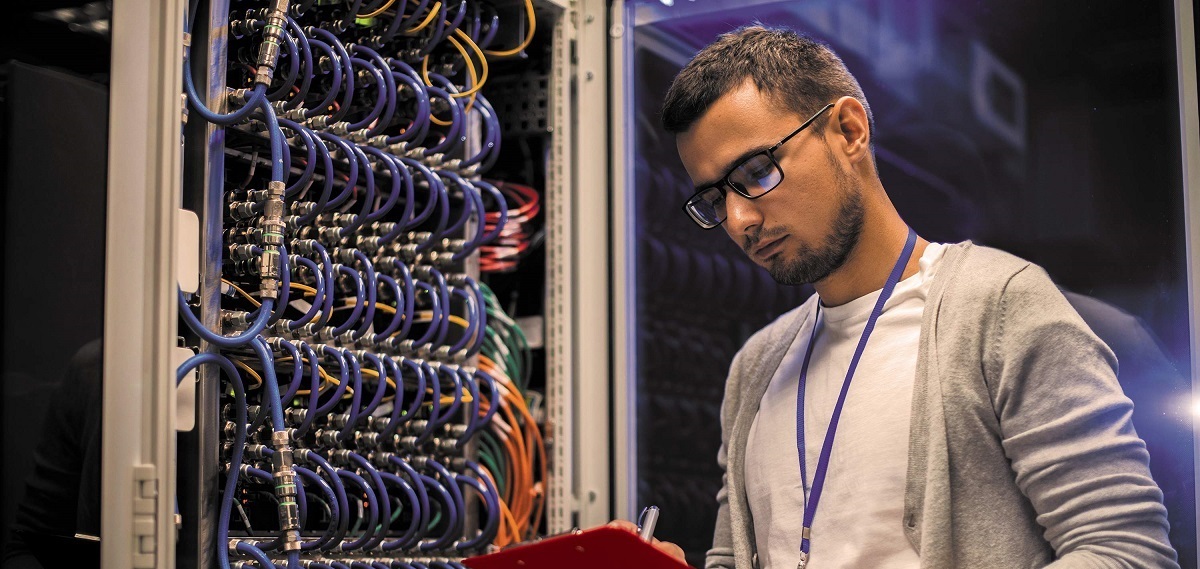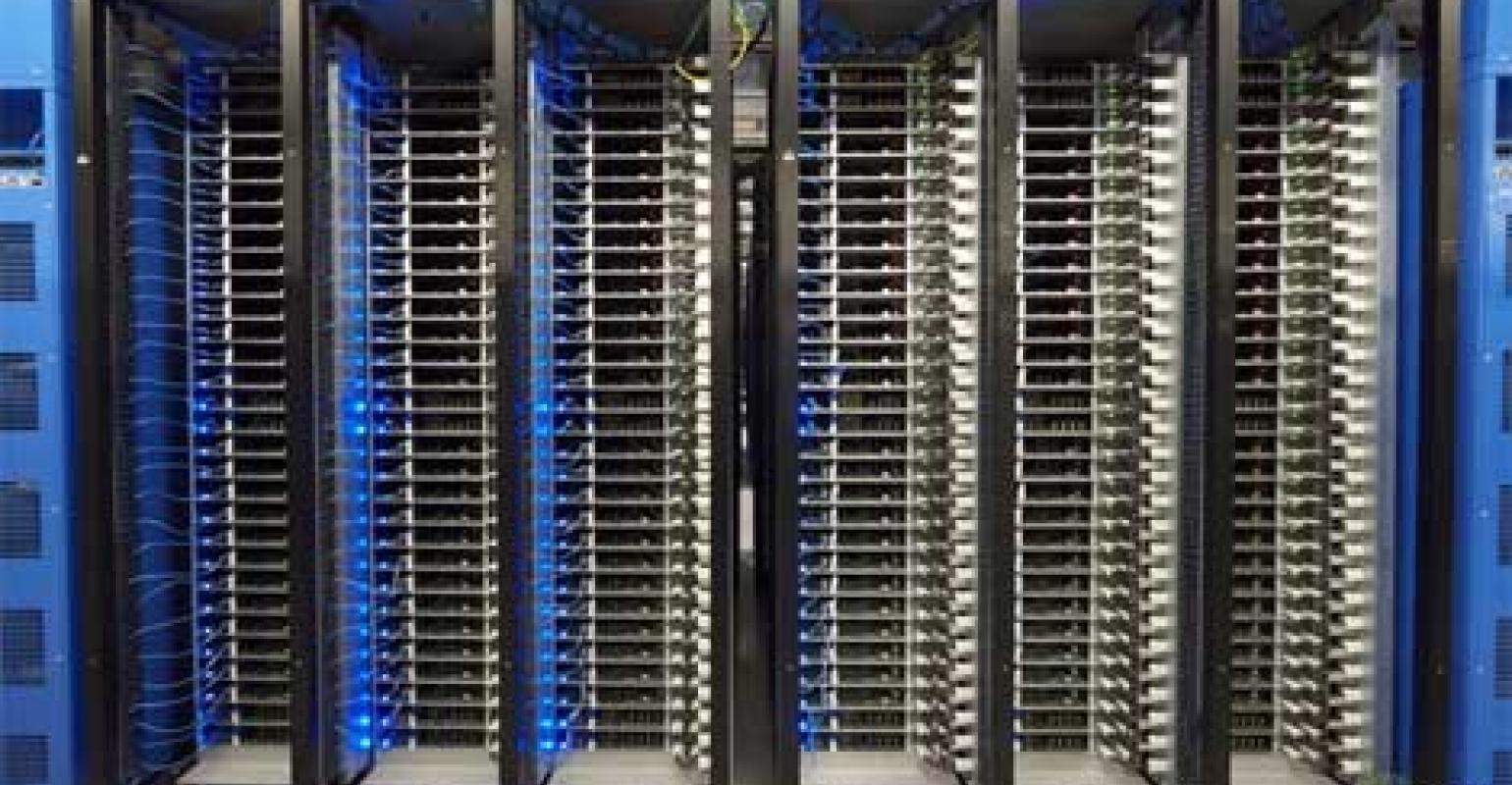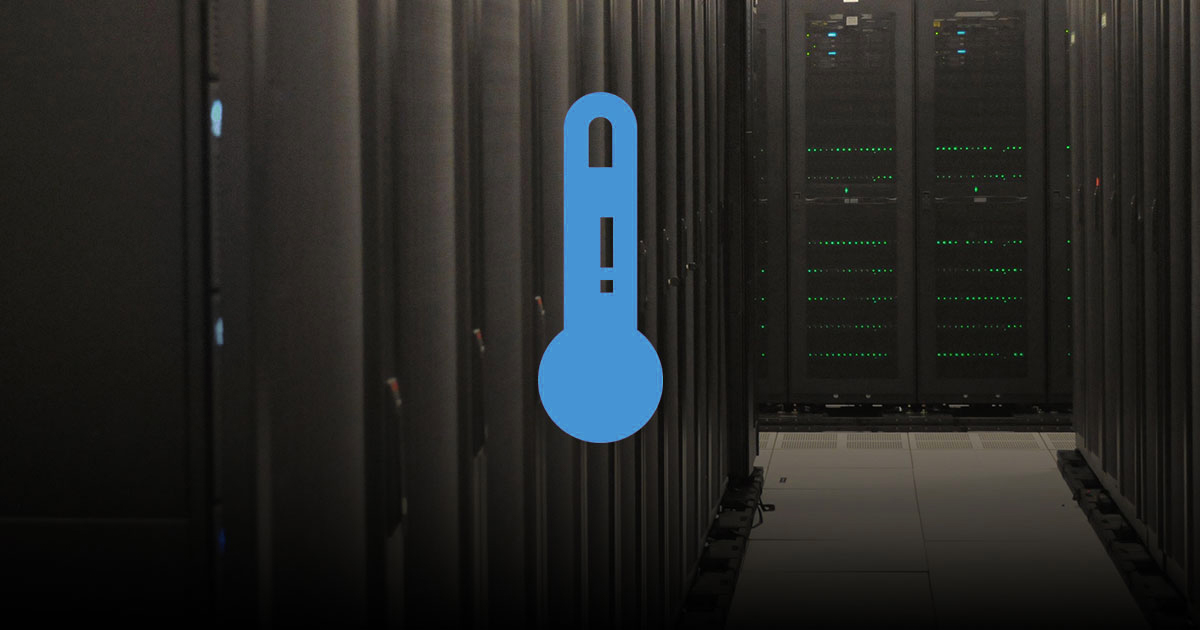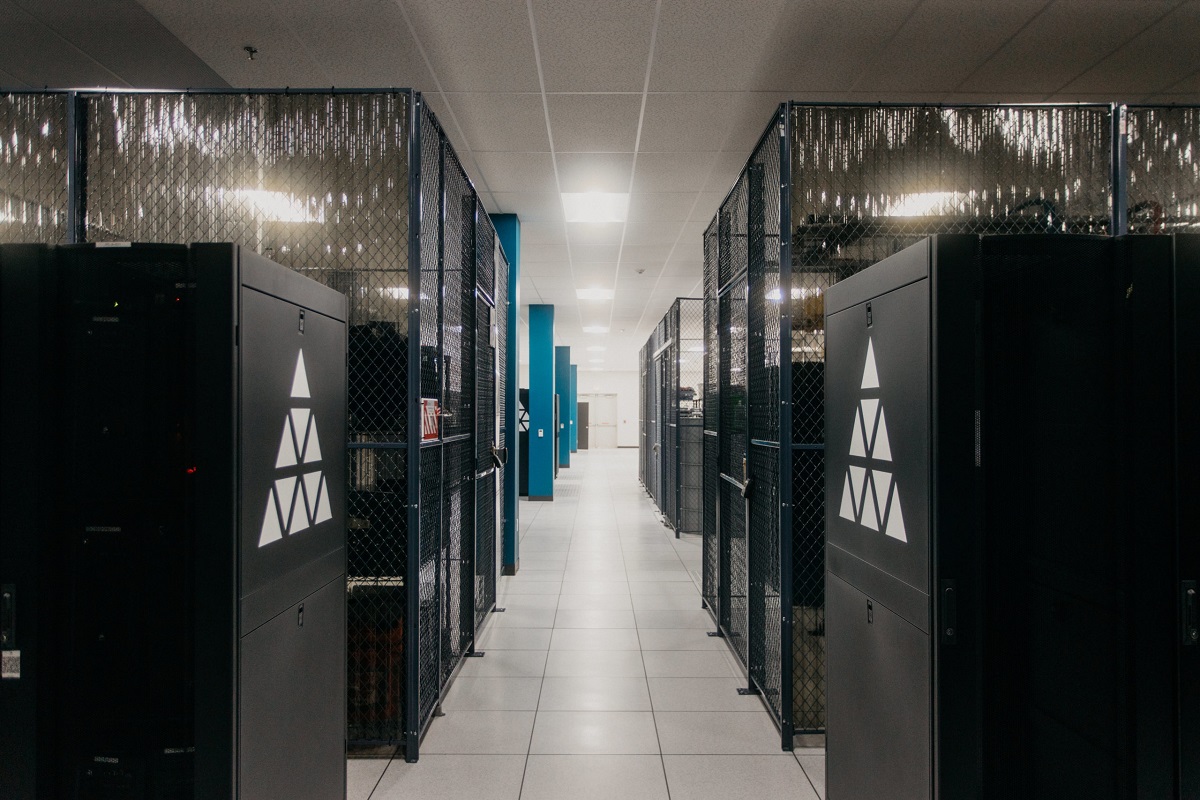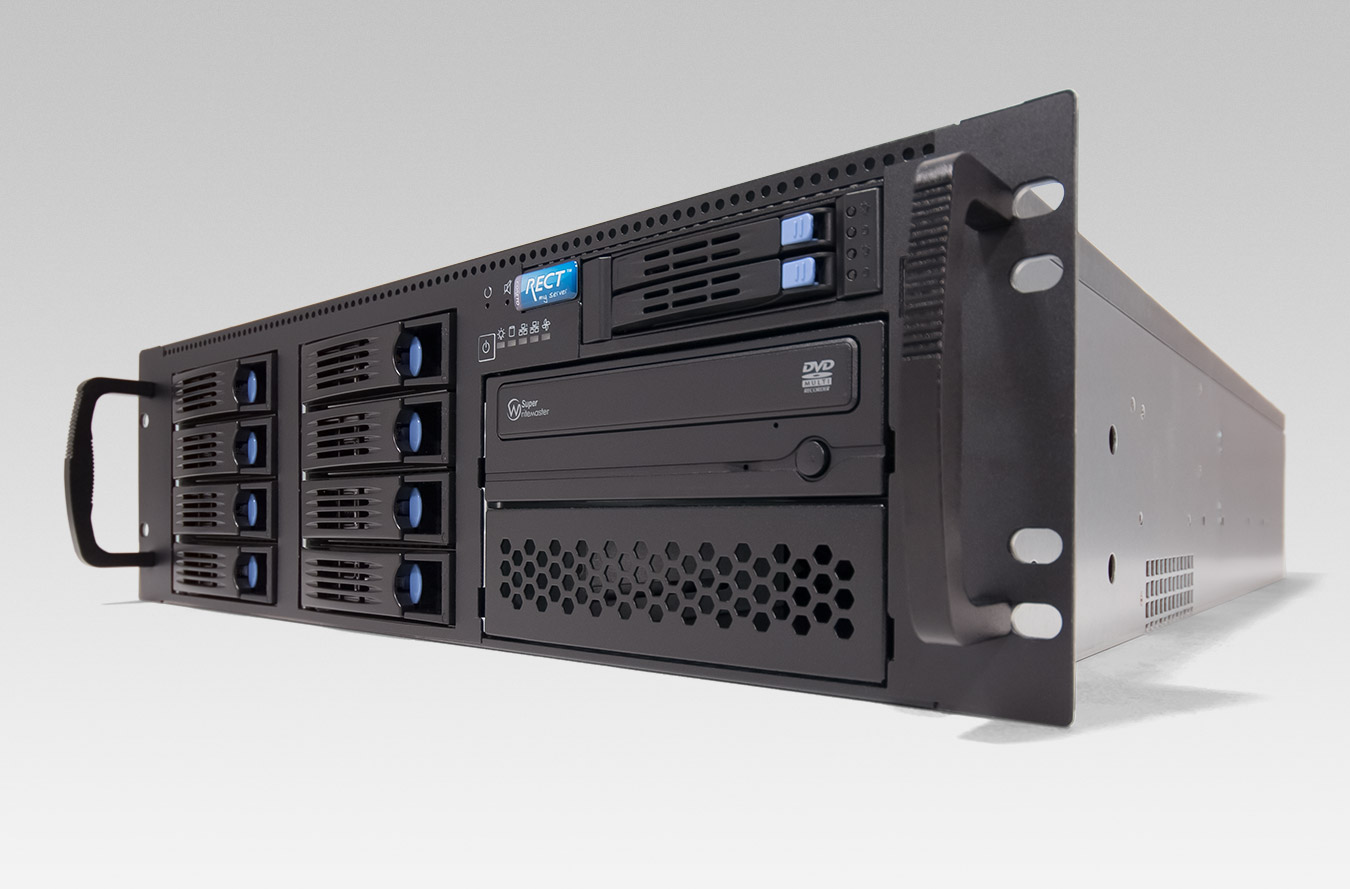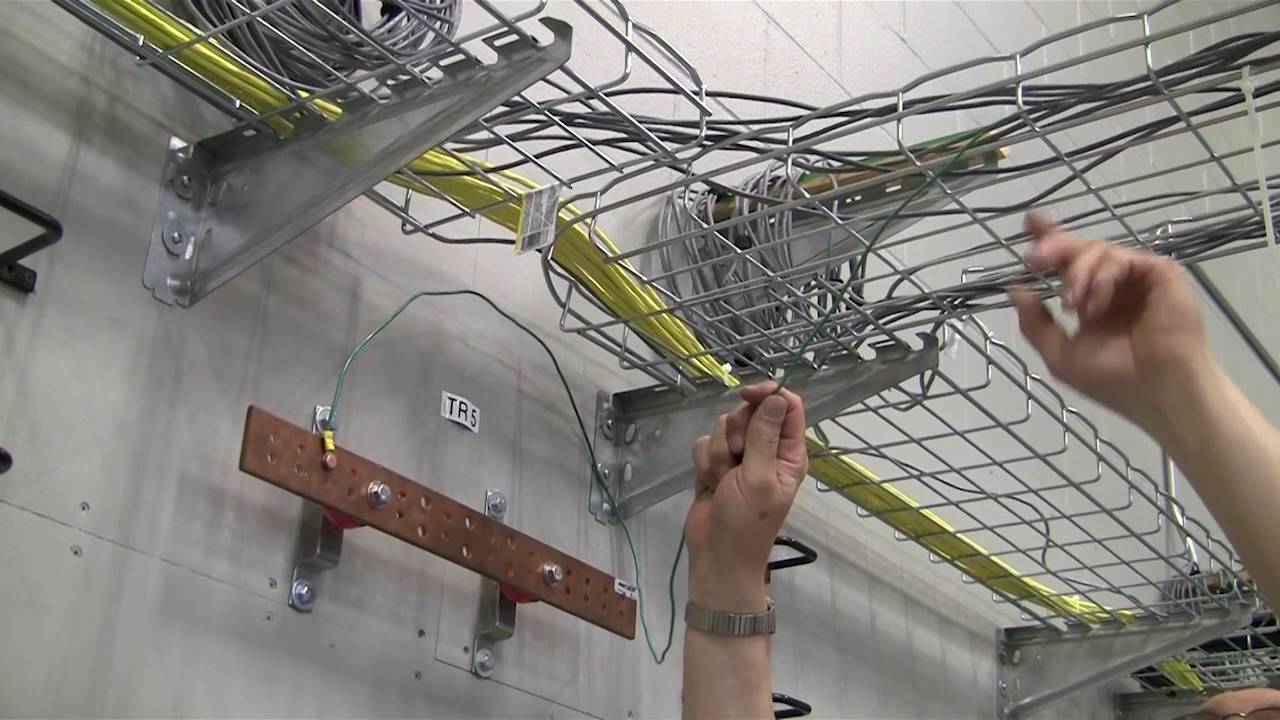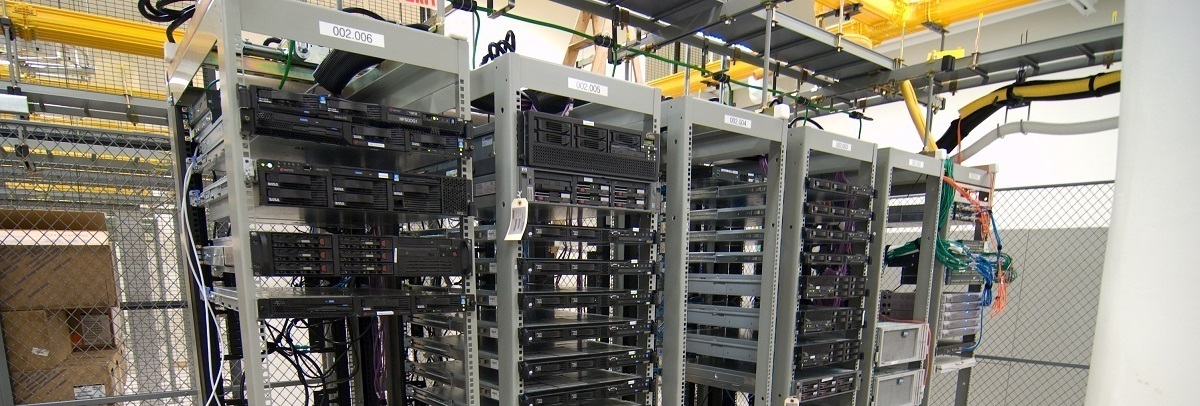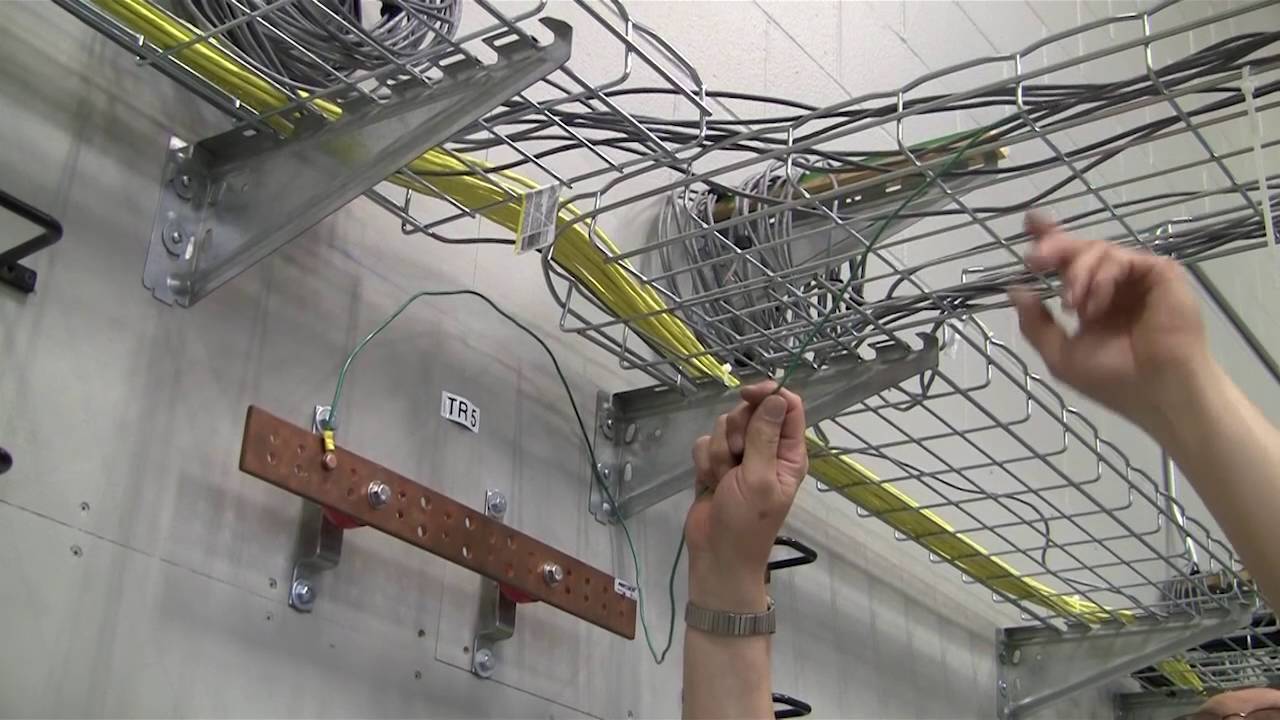What is a Server Rack?
A server rack is a physical frame or cabinet designed to house and organize computer servers, networking devices, and other IT equipment. It provides a structured space for the secure installation and management of these critical components in data centers, server rooms, or any other environment where IT infrastructure is housed.
Server racks are typically constructed with a standardized form factor, allowing for compatibility and flexibility in accommodating various equipment sizes and shapes. They feature vertical mounting rails or shelves that can be adjusted to fit different server depths, ensuring a proper fit and optimal airflow.
These racks are often made of durable materials such as steel or aluminum to ensure stability, structural integrity, and protection for the housed equipment. They come with front and rear doors that can be locked for added security, as well as built-in cable management systems to organize and route cables efficiently.
Server racks are available in various sizes, ranging from a few rack units (U) to several dozens of U, with each U representing a unit of height equal to 1.75 inches (4.45 cm). Common rack sizes include 1U, 2U, 4U, and 42U. The choice of rack height depends on the quantity and size of the servers and equipment being used.
Moreover, server racks are designed to facilitate easy installation, maintenance, and upgrades. They provide front and rear access to servers, allowing IT professionals to conveniently manage and service the equipment without disrupting the entire infrastructure.
In summary, a server rack is a specialized enclosure designed to house and organize IT equipment, ensuring efficient and secure infrastructure management. It plays a crucial role in the overall functionality and reliability of data centers and server rooms by providing a structured and optimized environment for servers and networking components.
Importance of Server Racks
Server racks play a vital role in modern IT infrastructure by providing numerous benefits and solving critical challenges faced by organizations. Here are some key reasons why server racks are important:
- Optimal Equipment Organization: Server racks offer a structured and systematic approach to organizing IT equipment. By neatly arranging servers, switches, routers, and other hardware, it becomes easier to locate and access specific components, reducing troubleshooting and maintenance time.
- Improved Accessibility: Server racks provide easy access to equipment from both the front and rear sides. This accessibility enhances convenience during installation, configuration, and maintenance tasks, ensuring efficient management of the IT infrastructure.
- Enhanced Airflow and Cooling: Server racks are designed with ventilation and cooling in mind. They feature fans, airflow management panels, and cable management systems that optimize airflow and prevent hotspots. This cooling efficiency helps in maintaining ideal operating temperatures for servers, minimizing the risk of hardware failure due to overheating.
- Reduced Downtime: A well-organized server rack enables quick identification and resolution of issues. With clear cable management and labeling systems, IT professionals can easily trace connections and identify faulty equipment, leading to faster troubleshooting and reduced downtime.
- Space Optimization: Server racks allow for efficient use of valuable space in data centers or server rooms. They provide a compact and standardized solution for consolidating multiple servers and devices into a smaller footprint, maximizing the utilization of available space.
- Enhanced Physical Security: Server racks come with lockable doors and secure access control mechanisms, protecting sensitive equipment from unauthorized access or tampering. This safeguards data integrity and prevents potential security breaches.
- Scalability and Future-Proofing: Server racks offer scalability by providing additional rack units to accommodate future growth. IT teams can easily add or replace equipment without disrupting the existing infrastructure, saving time and resources.
- Clean and Organized Cabling: Server racks provide cable management solutions that keep cables tidy and organized. This not only improves airflow but also simplifies troubleshooting by reducing cable clutter and minimizing the chances of accidental disconnections.
- Cost Savings and ROI: Investing in server racks helps organizations save money in the long run. By preventing equipment damage due to improper handling or overheating, reducing downtime, and facilitating efficient management, server racks contribute to a higher return on investment and lower total cost of ownership.
In essence, server racks are critical components of modern IT infrastructure that offer benefits such as improved organization, accessibility, cooling, security, and scalability. By investing in properly designed and implemented server racks, organizations can enhance the overall efficiency, reliability, and longevity of their IT systems.
Advantages of Using a Server Rack
Using a server rack provides several advantages for organizations that rely on IT infrastructure. Here are some key benefits of utilizing a server rack:
- Efficient Space Utilization: Server racks are designed to maximize space utilization by providing a compact and organized solution for housing multiple servers and networking equipment. This allows organizations to optimize their physical environment, ensuring efficient use of limited space.
- Easy Equipment Management: Server racks offer a centralized and accessible location for managing IT equipment. With clearly labeled and organized racks, IT professionals can easily identify and access servers and other components, facilitating efficient installation, maintenance, and troubleshooting.
- Improved Airflow and Cooling: Server racks are designed with airflow management in mind. They feature built-in ventilation systems, cable management solutions, and rack spacing that optimize air circulation and cooling. This helps in maintaining optimal operating temperatures for servers and mitigating the risk of hardware failures caused by overheating.
- Enhanced Security: Server racks provide physical security for valuable IT equipment. With lockable doors and access control mechanisms, organizations can ensure that only authorized personnel have access to the servers. This helps in safeguarding sensitive information and protecting against unauthorized tampering or theft.
- Streamlined Cable Management: Server racks come with integrated cable management solutions, such as cable trays, hooks, and routing options. These features allow for neat and organized cable arrangement, reducing cable clutter, minimizing the risk of accidental disconnections, and simplifying troubleshooting.
- Scalability and Flexibility: Server racks offer scalability by providing additional rack units for accommodating future growth and expansion. Organizations can easily add or replace servers and networking equipment without disrupting the entire infrastructure, saving time, effort, and costs.
- Improved Maintenance and Accessibility: Server racks provide easy front and rear access to equipment, simplifying maintenance tasks. IT professionals can swiftly install, replace, or upgrade servers and components without the need to dismantle the entire setup, leading to minimal downtime and reduced disruption.
- Organized and Professional Appearance: Utilizing a server rack creates a clean and professional look in data centers or server rooms. With equipment neatly arranged and cables properly managed, the overall appearance is visually appealing and reflects a well-organized IT environment.
- Cost Savings: By using a server rack, organizations can save money in the long run. Efficient cooling and airflow management reduce energy consumption, leading to lower operating costs. Additionally, streamlined maintenance and improved accessibility help minimize downtime, resulting in increased productivity and cost savings.
Overall, the advantages of using a server rack are numerous, including efficient space utilization, easy equipment management, improved cooling and security, streamlined cable management, scalability, and cost savings. By implementing server racks, organizations can optimize their IT infrastructure, enhance productivity, and ensure the reliability and longevity of their systems.
Increased Efficiency with Server Racks
Server racks play a significant role in boosting the efficiency of IT infrastructure in various ways. Here are some key ways in which server racks can increase efficiency:
- Optimized Equipment Organization: Server racks provide a structured and organized layout for IT equipment. By arranging servers, switches, and other devices in a logical manner, it becomes easier to locate and manage specific components. This organized setup minimizes the time required for troubleshooting and maintenance tasks, improving overall operational efficiency.
- Efficient Cooling and Airflow Management: Server racks are designed with cooling and airflow management in mind. They feature ventilation systems, cable management solutions, and rack spacing that optimize the flow of cold air to the servers. This ensures that the equipment operates at the optimal temperature, maximizing their performance and minimizing the risk of overheating and hardware failures.
- Streamlined Cable Management: Server racks come with integrated cable management solutions, such as cable trays, hooks, and routing options. These features facilitate proper organization and routing of cables, reducing cable clutter and tangling. Well-managed cables improve airflow and ease the identification and disconnection of specific cables, resulting in faster troubleshooting and maintenance processes.
- Convenient Equipment Access: Server racks offer both front and rear access to IT equipment. This accessibility allows IT professionals to reach and manage the servers and components comfortably. It eliminates the need to dismantle the entire rack while performing maintenance tasks, reducing downtime and increasing operational efficiency.
- Maintenance and Upgrades: Server racks provide a more convenient and efficient environment for equipment maintenance and upgrades. With proper labeling, clear organization, and easily removable components, IT professionals can swiftly perform necessary tasks without disrupting the rest of the infrastructure. This reduces downtime and streamlines the process of adding or replacing servers and components.
- Improved Troubleshooting: A well-organized server rack simplifies the process of troubleshooting and identifying issues. With proper cable management and labeling, IT professionals can trace connections quickly, locate faulty equipment, and pinpoint the root cause of problems. This speeds up the troubleshooting process, reducing downtime and enhancing overall efficiency.
- Enhanced Scalability: Server racks offer scalability by providing the flexibility to add or remove servers and components as needed. They offer additional rack units for accommodating future growth and technological advancements. This scalability eliminates the need for complete infrastructure overhauls when expanding the IT system, resulting in cost and time savings.
- Safe and Secure Environment: Server racks provide physical security for critical IT equipment. With lockable doors and access control mechanisms, organizations can restrict access to authorized personnel only. This ensures the safety of sensitive data and protects against unauthorized tampering or theft, contributing to a more efficient and secure IT environment.
In summary, server racks significantly increase efficiency in IT infrastructure by optimizing equipment organization, enhancing cooling and airflow management, streamlining cable management, providing convenient equipment access, simplifying maintenance and upgrades, improving troubleshooting processes, enabling scalability, and ensuring a safe and secure environment for IT assets. By implementing server racks, organizations can enhance operational efficiency, reduce downtime, and optimize resource utilization.
Server Rack Space Optimization
Server rack space optimization is a crucial aspect of managing IT infrastructure efficiently. By maximizing the utilization of available space within a server rack, organizations can ensure optimal efficiency and scalability. Here are some key strategies for server rack space optimization:
- Choosing the Right Rack Size: Selecting the appropriate rack size is essential for efficient space utilization. Consider the size and number of servers and networking equipment you need to accommodate both in the present and in the future. Opt for a rack size that provides enough vertical space for expansion without leaving too much empty space.
- Utilizing Rack Mount Equipment: Rack mountable servers and networking devices are designed to fit precisely into server racks. By using rack mount equipment instead of traditional tower servers, you can maximize the vertical space within the rack, allowing for higher density and increased equipment capacity.
- Vertical Rack Mounting: Mounting equipment vertically allows better utilization of space within a rack. It helps to secure smaller devices and switches vertically, freeing up horizontal space for larger servers. This arrangement optimizes the overall capacity of the rack, ensuring efficient space management.
- Implementing High-Density Solutions: High-density server solutions, such as blade servers or server chassis, offer a compact design that allows for multiple servers to be housed within a limited rack space. These solutions eliminate the need for individual server enclosures, leading to significant space savings without compromising performance.
- Proper Cable Management: Effective cable management is essential for space optimization within server racks. Utilize cable trays, cable routing panels, and cable ties to keep cables organized and prevent them from blocking airflow or occupying unnecessary space. Neatly managed cables create a clutter-free environment and make it easier to access and maintain equipment.
- Consolidating Equipment: Consolidating multiple servers or components into a single unit can optimize space within a rack. For example, virtualization allows organizations to run multiple virtual servers on a single physical server, reducing the number of physical servers needed and freeing up rack space.
- Regular Equipment Audit: Conducting regular equipment audits helps identify redundant or obsolete devices that can be removed from the rack. Removing unused or outdated equipment not only frees up space but also reduces power consumption and maintenance requirements.
- Efficient Rear Cable Management: In addition to managing cables at the front of the rack, it is crucial to pay attention to rear cable management as well. Proper routing, organization, and labeling of cables at the rear of the rack ensure that they do not obstruct equipment or impede airflow, further optimizing space and promoting efficient maintenance.
- Consider Modular Racks: Modular rack solutions offer the flexibility to customize the rack layout and configuration based on specific requirements. They allow for easy expansion or reconfiguration as the need arises, making them ideal for optimizing space and accommodating future growth.
By implementing these strategies, organizations can make the most of their server rack space, ensuring efficient utilization, scalability, and ease of maintenance. Server rack space optimization results in a streamlined IT infrastructure, reduced physical footprint, and enhanced overall efficiency.
Improved Cooling and Airflow
Cooling and airflow management are crucial considerations when it comes to maintaining optimal performance and preventing equipment failures in IT infrastructure. Server racks play a pivotal role in improving cooling and airflow, ensuring a stable and efficient environment for servers and networking equipment. Here are some key factors related to improved cooling and airflow with the use of server racks:
- Strategic Rack Placement: Server racks should be positioned in a way that allows for proper airflow throughout the room or data center. Placing racks in rows with adequate spacing allows for efficient air circulation, minimizing the risk of hotspots and ensuring uniform cooling across the infrastructure.
- Rack Ventilation Options: Server racks come with built-in ventilation options, such as perforated doors and vented side panels. These features promote airflow by allowing cool air to enter from the front of the rack and hot air to exit from the rear, preventing heat buildup within the rack enclosure.
- Avoiding Blocked Airflow: Proper cable management is essential for maintaining good airflow within a server rack. Cables should be neatly organized using cable management solutions, such as cable trays and hooks, to prevent cable clutter that can obstruct the path of airflow. This ensures that cool air can flow freely to the servers, optimizing cooling efficiency.
- Hot Aisle/Cold Aisle Configuration: Implementing a hot aisle/cold aisle configuration can enhance cooling effectiveness. In this setup, server racks are arranged in alternating rows, with the front of the servers facing the cold aisle where cool air is supplied, and the rear of the servers facing the hot aisle where hot air is exhausted. This arrangement helps isolate and expel hot air, thereby improving cooling efficiency.
- Rack Level Airflow Management: Server racks are designed to facilitate proper airflow at the rack level. They feature perforated front and rear doors, which allow cool air to enter and hot air to escape. Equipment placement within the rack should follow manufacturer guidelines to ensure that airflow is not obstructed, allowing for efficient cooling.
- Efficient Cable Routing: Careful cable routing and organization play a significant role in maintaining good airflow within a server rack. Cables should be routed away from server ventilation pathways and arranged to avoid blocking airflow vents. This prevents the disruption of airflow and helps maintain optimal cooling conditions.
- Additional Cooling Solutions: In cases where the ambient temperature exceeds the recommended operating range, supplemental cooling solutions, such as fans or precision air conditioning units, can be employed. These solutions help maintain a consistent and suitable environment for the equipment, preventing overheating and ensuring reliable operation.
- Monitoring and Optimization: Regular monitoring of temperature and airflow within the server rack is vital to identify inefficiencies and make necessary adjustments. Temperature sensors and environmental monitoring tools can be utilized to track temperature variations and detect hotspots. Such monitoring enables proactive measures to optimize cooling and airflow, ensuring a stable and well-maintained IT environment.
- Periodic Maintenance: Regular maintenance of cooling systems, including cleaning air filters, ensuring proper functioning of fans and ventilation, and removing any obstructions, is essential to sustain optimal cooling efficiency. This maintenance helps prevent dust buildup, ensures consistent airflow, and prolongs the lifespan of cooling equipment.
By considering these factors and implementing appropriate cooling and airflow management strategies within server racks, organizations can effectively maintain optimum temperature levels, prevent equipment overheating, and enhance the overall efficiency and longevity of their IT infrastructure.
Organization and Cable Management
Effective organization and cable management are crucial aspects of maintaining a well-functioning and efficient IT infrastructure. Server racks provide the perfect solution for organizing equipment and managing cables in a structured and streamlined manner. Here are some key benefits and strategies related to organization and cable management in server racks:
- Neat and Tidy Environment: Server racks offer a designated space for arranging servers, switches, and other IT equipment. With proper organization, the rack provides a clean and professional appearance, enhancing the overall aesthetic appeal of the data center or server room.
- Reduced Cable Clutter: Effective cable management eliminates cable clutter within the server rack. Cable trays, cable management panels, and other solutions can be used to route and secure cables properly, preventing tangling and minimizing the risk of accidental disconnections. Neatly organized cables simplify troubleshooting and maintenance.
- Improved Airflow: Proper cable management within server racks promotes better airflow. Cables that are neatly arranged and secured prevent obstruction of airflow pathways, ensuring efficient cooling and preventing potential hotspots. Better airflow contributes to the overall longevity and reliability of the servers and networking equipment.
- Easy Identification and Accessibility: Well-organized server racks make it easier to identify and access specific servers or components. By properly labeling cables and equipment, IT professionals can quickly locate and work with the required devices, reducing downtime and enhancing productivity. Organized racks also simplify equipment installation and maintenance tasks.
- Reduced Risk of Errors: With clearly labeled and organized cables, the chances of human errors, such as inadvertent disconnections or accidental swaps, are significantly minimized. This reduces the risk of disruption to the IT infrastructure and minimizes the time and effort required to rectify such errors.
- Scalability and Future-Proofing: Well-organized server racks make it easier to manage expansion and future upgrades. By planning and implementing a structured cable management system, organizations can easily add or replace servers and equipment without disrupting the existing setup. This allows for seamless scalability and future-proofing of the IT infrastructure.
- Safety and Maintenance: Proper cable management in server racks contributes to a safer working environment. With cables organized and secured, the risk of accidents, such as trips or falls, caused by loose cables is reduced. Furthermore, organized cables make it easier to identify and resolve issues during maintenance or troubleshooting activities.
- Standardization and Documentation: Organizing cables within server racks facilitates standardization and documentation. Keeping track of cable connections and labeling them according to a standardized system simplifies management and ensures consistency across the IT infrastructure. Additionally, proper documentation enables efficient troubleshooting and maintenance in the future.
- Flexibility and Adaptability: Server racks offer the flexibility to adapt to changing IT requirements. As equipment is added, replaced, or upgraded, proper cable management allows for easy reconfiguration or expansion within the rack. This adaptability reduces the time and effort required to make changes and ensures a more efficient workflow.
By implementing effective organization and cable management strategies within server racks, organizations can maintain a neat and accessible IT environment. This reduces cable clutter, promotes efficient cooling and airflow, improves troubleshooting and maintenance activities, and enhances overall productivity and reliability of the IT infrastructure.
Enhanced Physical Security
Physical security is of utmost importance in ensuring the protection of IT infrastructure and sensitive data. Server racks play a significant role in enhancing physical security by providing a secure and controlled environment for critical IT equipment. Here are some key aspects of enhanced physical security through the use of server racks:
- Lockable Doors: Server racks come with lockable front and rear doors, offering an added layer of physical security. By restricting access to authorized personnel only, organizations can prevent unauthorized access, tampering, or theft of valuable IT equipment.
- Access Control Measures: Server racks can be equipped with various access control mechanisms, such as keycards, biometric scanners, or combination locks. These measures ensure that only authorized individuals can gain entry to the server rack, further enhancing security and minimizing the risk of unauthorized access or data breach.
- Surveillance and Monitoring: Placing server racks within a secured area that is equipped with video surveillance cameras and motion sensors enhances physical security. Monitoring and recording activities around the racks further deter unauthorized personnel from attempting unauthorized access or tampering with the equipment.
- Environmental Monitoring: Server racks can be equipped with environmental monitoring systems that detect changes in temperature, humidity, and other factors. Such monitoring alerts IT personnel to any irregularities that could potentially damage the equipment or compromise security, enabling prompt action to mitigate risks.
- Secure Cable Routing: Proper cable management within server racks ensures that cables do not extend beyond the rack enclosure, preventing them from being tampered with or accidentally disconnected. Securely routing cables within the rack reduces the risk of unauthorized access to sensitive data or equipment.
- Physical Deterrent: The presence of locked server racks itself acts as a physical deterrent against unauthorized access. The solid construction and strong materials used in server rack manufacturing create a physical barrier that adds an extra layer of protection, making it harder for unauthorized individuals to gain access to the equipment.
- Auditable Access Logs: Server racks can be configured to maintain audit logs of access attempts and successful accesses. Auditable access logs not only help in tracking who has accessed the rack but can also serve as evidence in the event of an incident, assisting in investigations and preventing future security breaches.
- Secure Equipment Storage: Server racks provide a secure and organized space for IT equipment storage. By keeping equipment locked within the rack, organizations protect against theft or unauthorized physical access. Secure equipment storage also reduces the risk of accidental damage caused by mishandling or improper storage.
- Compliance with Regulations: Many industries are subject to strict security and privacy regulations. Utilizing server racks that meet or exceed relevant compliance standards ensures that organizations maintain the required level of physical security for their IT infrastructure, avoiding non-compliance penalties or legal repercussions.
- Physical Redundancy: Server racks can be equipped with redundant power supplies or backup systems to ensure uninterrupted operation even during power outages or other disruptive events. This redundancy enhances the security and availability of critical systems, minimizing the risk of service interruptions or data loss.
By employing these physical security measures through the use of server racks, organizations can enhance the protection of their IT infrastructure, maintain the confidentiality and integrity of sensitive data, and mitigate the risk of unauthorized access or tampering.
Scalability and Future-Proofing
Scalability and future-proofing are critical considerations for organizations when planning and implementing their IT infrastructure. Server racks provide a scalable and adaptable solution that allows for seamless growth and the ability to accommodate future technological advancements. Here are some key aspects of scalability and future-proofing with the use of server racks:
- Vertical Expansion: Server racks offer vertical expansion capabilities, allowing organizations to easily add or remove rack units (U) as needed. This scalability enables the accommodation of additional equipment and promotes efficient use of rack space, ensuring that the infrastructure can grow and adapt to changing requirements.
- Rack Standardization: Utilizing standardized server racks ensures compatibility and flexibility when adding or replacing equipment. With standardized rack sizes and form factors, organizations can easily integrate new servers, switches, or other devices, reducing the complexity of future expansion or upgrades.
- Flexibility in Equipment Placement: Server racks provide a flexible layout for equipment placement. Components can be easily rearranged or repositioned within the rack, allowing for scalability without requiring extensive modifications to the infrastructure. This flexibility ensures efficient use of space and promotes adaptability to new workloads or technological advancements.
- Easy Additions and Upgrades: With server racks, adding or upgrading equipment becomes simpler and less disruptive. Servers and devices can be easily inserted or replaced without the need for extensive rewiring or reconfiguration. This streamlines the process of adopting new technologies and reduces the impact on the overall infrastructure.
- Future Technology Integration: Server racks provide a platform for organizations to seamlessly integrate new technologies as they emerge. Whether it is the adoption of advanced networking equipment, the incorporation of high-density servers, or the implementation of emerging technologies like edge computing, server racks can accommodate these innovations, ensuring future-proofing of the IT infrastructure.
- Scalable Power and Cooling: As the IT infrastructure expands, server racks can be equipped with scalable power and cooling solutions to meet growing demands. Modular power distribution units (PDUs) and cooling systems can be easily added to support increased equipment density, ensuring that the infrastructure can scale without compromising performance or thermal management.
- Efficient Cable Management for Future Growth: Proper cable management within server racks facilitates future growth. Organized and labeled cables allow for easy identification and tracing, simplifying the process of adding, removing, or upgrading devices. This efficient cable management reduces the time and effort required for future expansions or reconfigurations.
- Cost-Effective Scalability: By utilizing server racks, organizations can achieve cost-effective scalability. Scalable rack solutions eliminate the need for complete infrastructure overhauls when expanding the IT system. Instead, organizations can incrementally add or replace components within existing racks, saving both time and resources.
- Long-Term Investment: Server racks provide a long-term investment for IT infrastructure. Their scalability and future-proofing capabilities ensure that organizations can adapt to evolving technological needs without requiring significant infrastructure changes. This longevity of the server rack investment helps maximize the return on investment (ROI) over an extended period.
- Compatibility with Industry Standards: Server racks are designed to meet industry standards for size, performance, and compatibility. This ensures that organizations can easily work with various vendors and integrate different components into the existing rack infrastructure, facilitating interoperability and simplifying future upgrades or expansions.
By leveraging the scalability and future-proofing capabilities of server racks, organizations can effectively respond to evolving business needs and technological advancements. Server racks enable seamless expansion, easy equipment additions and upgrades, efficient cable management, and compatibility with emerging technologies, ensuring the longevity and adaptability of the IT infrastructure.
Cost Savings and ROI
Cost savings and return on investment (ROI) are major considerations for organizations when implementing IT infrastructure solutions. Server racks offer several cost-saving benefits that contribute to a positive ROI. Here are some key aspects of cost savings and ROI with the use of server racks:
- Space Optimization: Server racks maximize space utilization by consolidating multiple servers and networking equipment into a compact footprint. By efficiently using available space, organizations can avoid the need for additional data center floor space, saving on real estate costs.
- Reduced Energy Consumption: Proper cooling and airflow management provided by server racks contribute to significant energy savings. Efficient cooling systems prevent unnecessary power consumption related to excessive cooling demands and maintain optimal temperatures for servers, reducing overall energy costs.
- Minimized Downtime: The organized and accessible nature of server racks reduces downtime and decreases productivity losses. IT professionals can quickly identify and resolve issues with neatly arranged equipment and well-managed cables, resulting in a faster troubleshooting process and minimizing the impact of downtime on operations.
- Scalability and Flexibility: Server racks offer scalability and flexibility, allowing organizations to adapt to changing IT needs without the hassle of significant infrastructure changes. This eliminates the costs associated with complete system replacements and allows for incremental additions or upgrades as required.
- Improved Maintenance Efficiency: Well-organized server racks simplify equipment maintenance, upgrades, and replacements. With clear labeling and easy access to components, IT professionals can perform tasks more efficiently, reducing the time required for maintenance activities and minimizing labor costs.
- Extended Equipment Lifespan: Server racks promote better cooling, airflow, and cable management practices, contributing to the longevity of the IT equipment. By maintaining optimal operating conditions and preventing damage caused by improper handling or overheating, organizations can extend the lifespan of their servers and networking devices, saving on replacement costs.
- Reduced Risk of Equipment Failure: Proactive cooling and temperature regulation provided by server racks minimize the risk of equipment failure due to overheating, prolonging the life of critical IT components. This reduces the need for emergency repairs or premature replacements, resulting in cost savings and improved ROI.
- Lower Maintenance Expenses: Proper cable management within server racks reduces the risk of cable-related failures and facilitates easier troubleshooting, resulting in lower maintenance costs. Well-managed cables are less prone to damage or accidental disconnections, minimizing the need for costly repairs or replacements.
- Enhanced Scalability: Server racks enable organizations to scale their IT infrastructure cost-effectively. By adding or replacing equipment within the existing rack infrastructure, organizations can minimize the expenses associated with full-scale infrastructure expansions or overhauls.
- Investment Longevity: Server racks offer a long-term investment with their scalability and adaptability. As technology advances, the racks can accommodate new equipment, ensuring compatibility and minimizing the need for costly infrastructure replacements in the future.
By leveraging the cost-saving benefits of server racks, organizations can achieve a higher ROI and optimize their IT infrastructure investment. The space optimization, reduced energy consumption, minimized downtime, improved maintenance efficiency, extended equipment lifespan, and scalability provided by server racks all contribute to cost savings and increased return on investment.
Conclusion
Server racks play a crucial role in the management and optimization of IT infrastructure. They offer numerous benefits, including efficient organization and cable management, improved cooling and airflow, enhanced physical security, scalability, and cost savings. Server racks provide a structured and secure environment for housing servers, switches, and other critical IT equipment. Their standardized form factor and flexible design allow for efficient use of space, easy access to equipment, and simplified maintenance and troubleshooting. Proper cable management within server racks ensures neatness, minimizes cable clutter, and promotes better airflow, contributing to enhanced cooling efficiency and reduced downtime. Additionally, server racks offer robust physical security features, such as lockable doors, access control mechanisms, and surveillance options, providing protection against unauthorized access and tampering.
By implementing server racks, organizations can optimize their IT infrastructure, streamline workflows, and ensure the reliability, scalability, and future-proofing of their systems. The efficient organization and cable management capabilities of server racks contribute to improved productivity and reduced downtime. The enhanced physical security features help safeguard valuable IT equipment and sensitive data. Additionally, server racks enable organizations to scale their infrastructure as needed, accommodating growth and technological advancements without the need for extensive infrastructure changes. Moreover, the cost-saving benefits of server racks, such as reduced energy consumption, minimized downtime, and increased equipment lifespan, contribute to higher returns on investment.
In conclusion, server racks are an indispensable component of modern IT infrastructure. They provide organizations with a structured, organized, and secure framework for managing servers, networking equipment, and cables. By leveraging the benefits of server racks, organizations can optimize their IT operations, enhance security, and achieve significant cost savings, supporting their long-term business objectives.







